It’s Rattlesnake Season—6 Warning Signs One is Near, Experts Say
There's no need to get rattled by these venomous reptiles if you learn to speak snake.
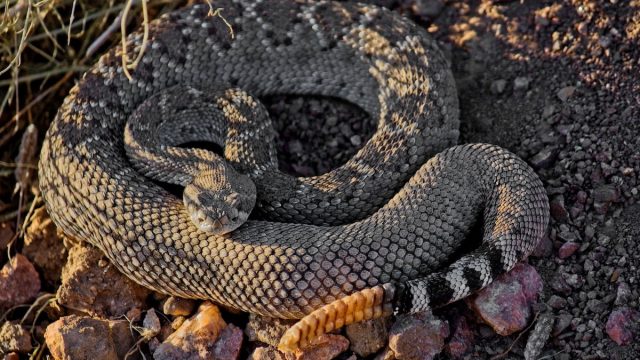
According to the U.S. Department of Agriculture (USDA), rattlesnakes are most active between April and October, which is also when the most bites occur. Though they’re not usually aggressive, rattlesnakes are venomous and will strike if threatened or touched, even accidentally. Considering that between 7,000 and 8,000 people in the U.S. are bitten by venomous snakes in the U.S. each year, according to the Centers for Disease Control and Prevention (CDC), you’ll want to know how to keep yourself safe this spring and summer—especially since between 10 and 44 percent of those bitten by rattlesnakes will have lasting injuries.
In fact, last year, officials in Pennsylvania issued a rattlesnake warning after an increase in sightings. “If there’s not a lot of rainfall, there’s not a lot of water available for the rattlesnake, or the food that the rattlesnakes are looking for. Then that’s the reason why the rattlesnakes may be moving around a little bit,” Mike Parker, the Pennsylvania Fish and Boat Commission’s communications director, told CBS News.
Keep reading to hear from reptile experts about the biggest warning signs that a rattlesnake is lurking nearby.
RELATED: 4 Scents That Attract Snakes to Your Yard, Experts Say.
1
Audible rattle

The number one warning sign that a rattlesnake is close is a telltale rattle sound.
The snake’s “rattle” is an accumulation of dry, dead skin cells that form on the tip of its tail each time it sheds its skin. The County of San Diego Parks & Recreation likens it to humans’ fingernails.
“The loose, articulation of these segments… results in the sound,” they explain. “When the snake vibrates its tail, one segment strikes the other.”
Charles van Rees, PhD, conservation scientist and naturalist at the University of Georgia, explains that rattlesnakes use their rattles when “hiding doesn’t do the trick” and they want you to know they’re near.
“You typically won’t hear this unless you’re dangerously close to a rattler and it’s very upset about it,” van Rees says. “I’ve nearly stepped on them by accident and not had them rattle at me, so not hearing a rattle doesn’t guarantee you’re in the clear.”
2
Hissing
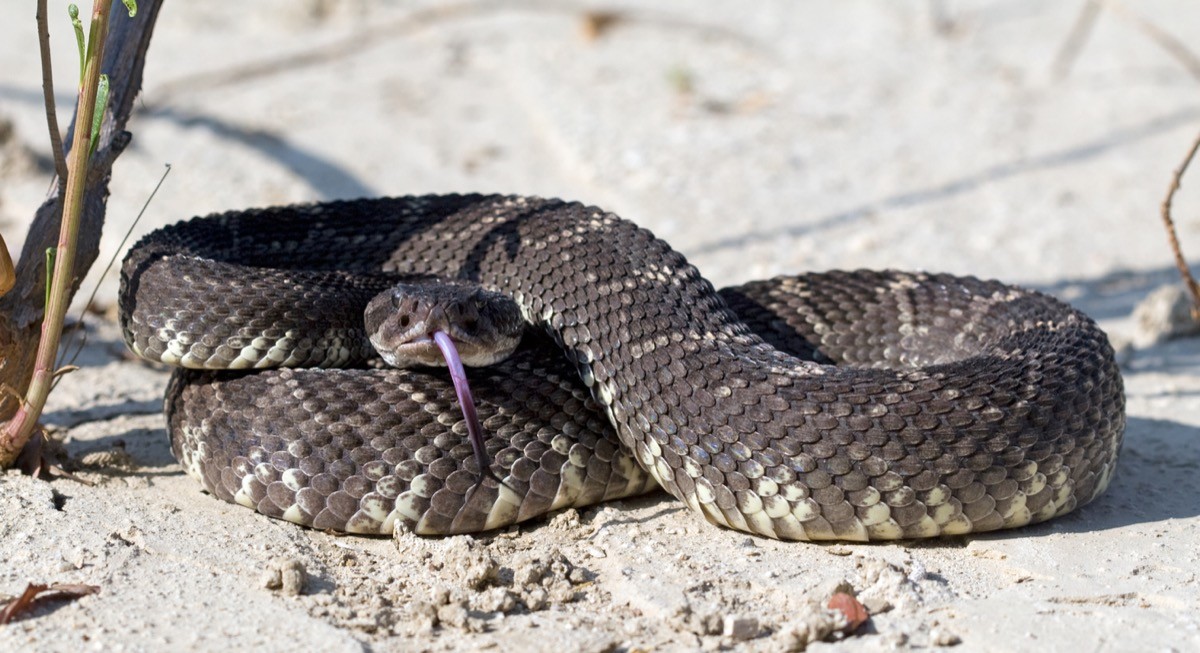
Hissing is a less common but overlooked sound a rattlesnake may make if you get too close.
In an interview with Live Science, Madison, Wisconsin-based herpetologist Sara Viernum explained that a rattlesnake’s body may also swell up or deflate as it hisses since its lung is “forcefully” expelling air.
RELATED: The Best Things to Wear to Protect Yourself During Rattlesnake Season.
3
Shed skin and droppings
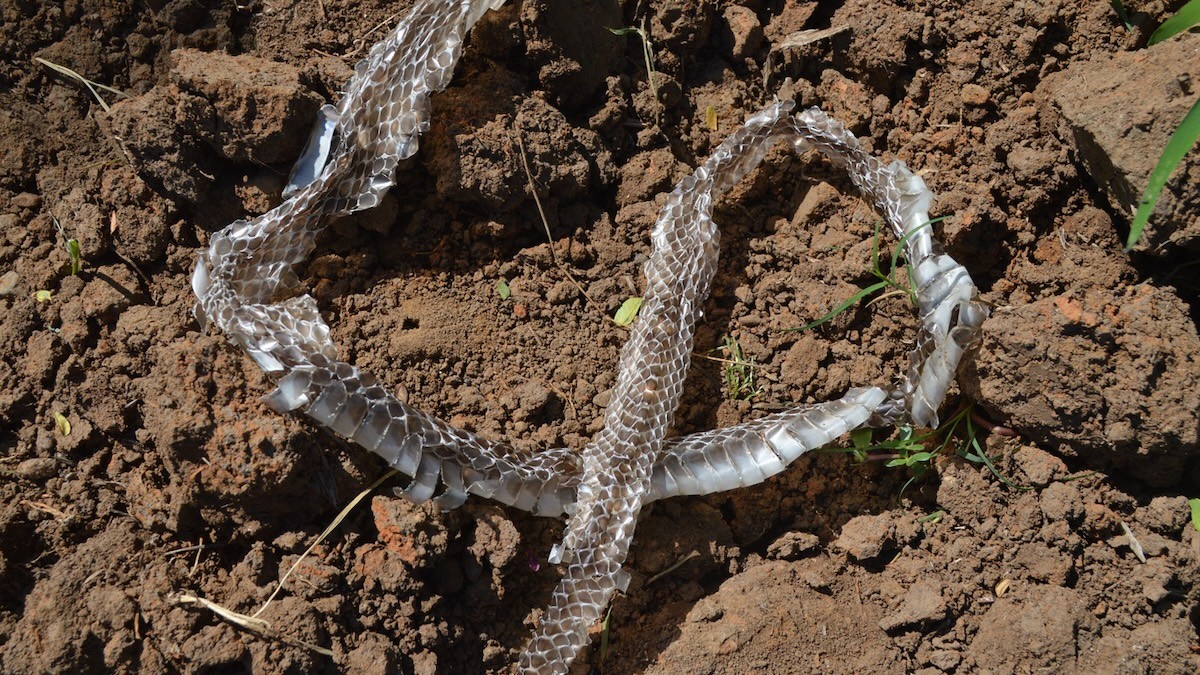
“All reptiles shed their skin as they grow, and snakes typically do this all at once, leaving behind a long shed,” explains van Rees. So, if you see a snakeskin, that’s a very good clue that one is near.
Another telltale sign of a snake’s presence is its droppings. Snake poop, says van Rees, “contains a whitish liquid component consisting of uric acid. However, the solid part is often much bigger, and elongated. If you’re dealing with a rattlesnake, you can expect to see obvious signs of their mammalian prey, like fur and little bones, in these droppings.”
4
Trails or tracks
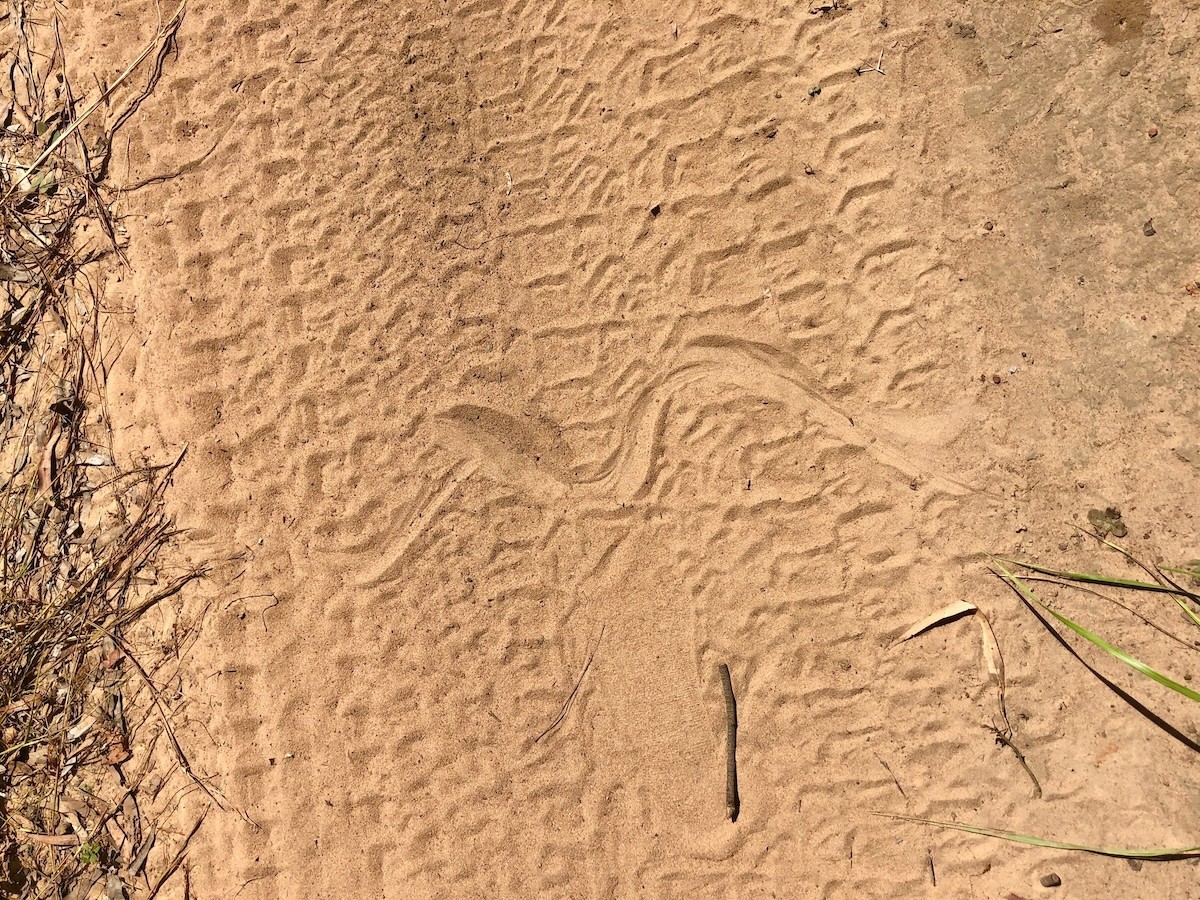
According to A.H. David, a snake expert and founder of Pest Control Weekly, rattlesnakes leave distinctive tracks, characterized by a straight, parallel series of lines or grooves made by their body and tail. These tracks may indicate that a rattlesnake is nearby.
“If the ground is dusty or sandy, you could see signs of a snake passing through; in those soil types, they can leave tracks just like any other land animal,” Van Rees adds. “You’ll want to look for undulating (smoothly squiggly) lines moving across the soil.”
RELATED: 5 Surprising Places Rattlesnakes Like to Hide Around Your Home.
5
Lots of hiding places
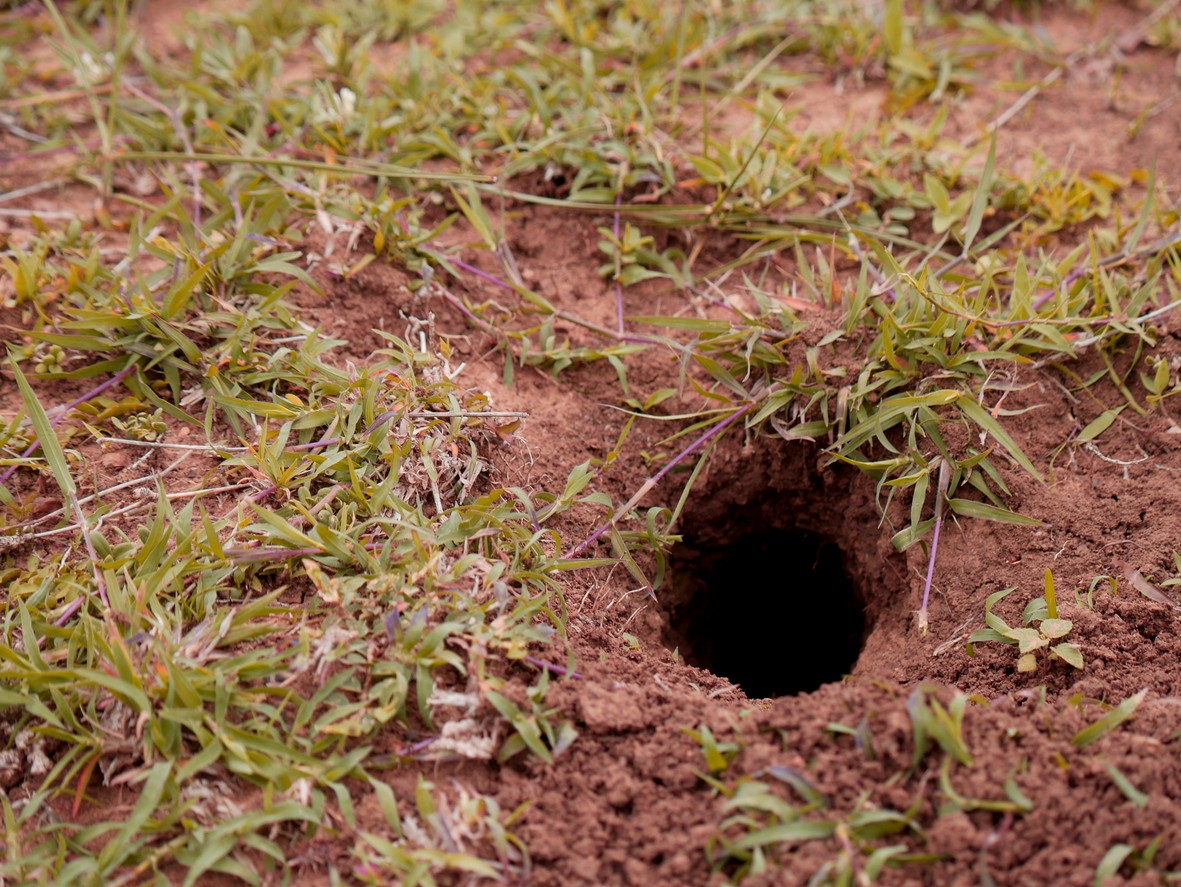
David explains that rattlesnakes often stay in dark, cool, hidden areas. “Be cautious when reaching into crevices, under rocks, or into bushes, as rattlesnakes could be lurking in these locations.”
Van Rees adds that, while rattlesnakes won’t dig their own holes, they’ll use ones that already exist to stay warm and dry in bad weather: “While other animals will make the holes, rattlesnakes are much more likely to occupy an area around their shelter. If you have lots of places where a rattlesnake might be hanging out, your likelihood of seeing one is probably much higher.”
6
Sudden disappearance of small prey animals
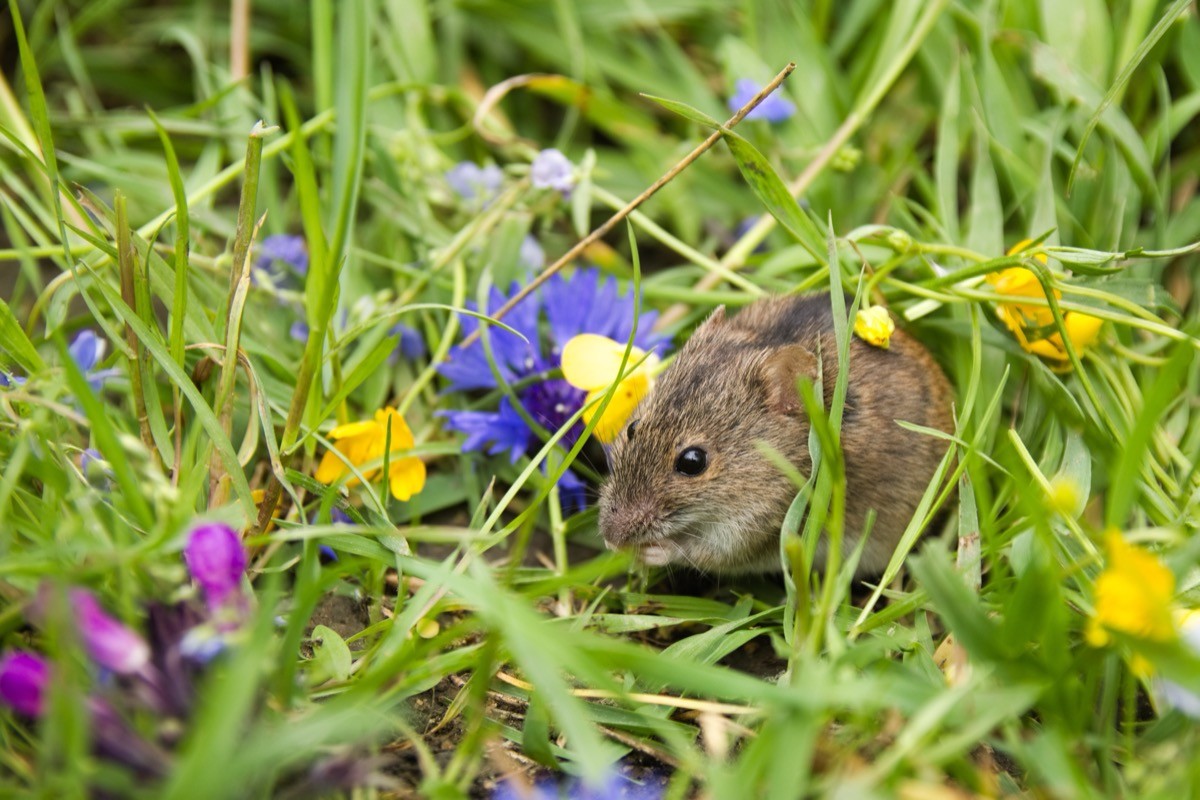
If you suddenly notice a drop in the population of your backyard critters, a rattlesnake may be the reason.
“Rattlesnakes feed on small mammals, birds, and reptiles,” David says. “A sudden decrease in the population of these animals in an area could be a sign of rattlesnake predation.”





















